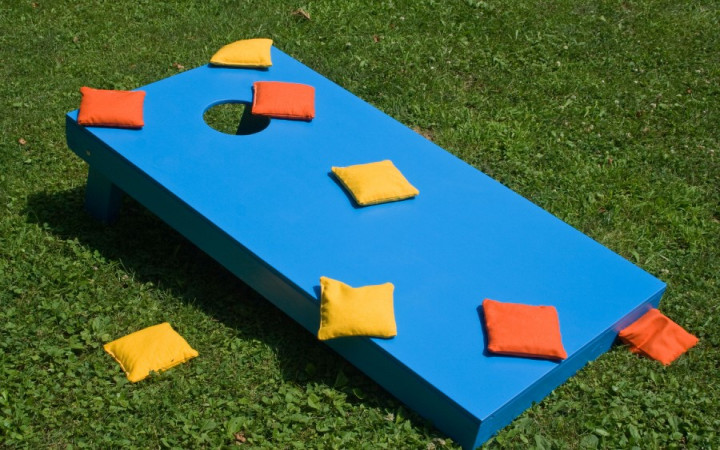Today’s Wonder of the Day was inspired by Wonder Friend. Wonder Friend Wonders, “Who invented cornhole?” Thanks for WONDERing with us, Wonder Friend!
Do you love family get-togethers and backyard barbecues? Who doesn't, right? From the smell of burgers on the grill to the taste of a sweet glass of lemonade, there's no better way to enjoy time with friends and family.
The fun wouldn't be complete, though, without some good-natured competition. For some families, the ultimate backyard game features competing teams attempting to toss a small, square bag into a round hole on a rectangular board tilted at an angle. What are we talking about? None other than cornhole!
Cornhole is a traditional lawn game enjoyed by players of all ages. Players take turns throwing bags at a raised platform with a round hole in the far end. If you get a bag in the hole, you score three points. A bag on the platform scores one point, while bags that don't reach or fall off the platform score no points. Usually the game continues until a player or team reaches 21 points.
Cornhole bags are square and are usually filled with one pound of corn kernels, although dried beans can also be used. Throwing a bag of corn into a hole obviously gave the game its name, although you may hear the game referred to by a variety of other names, including bean bag toss, tailgate, doghouse, baggo, and bags.
Cornhole boards are rectangles that have a six-inch hole closer to the top of the platform. Platforms are angled such that the top of the platform is higher off the ground than the bottom. The platforms are placed facing each other with the holes about 33 feet apart.
Players each have four bags that they take turns tossing toward the opposite platform, trying to land the bag on the platform and ultimately into the hole. Games can feature two or four players.
When playing cornhole, most players use cancellation scoring, so that the game lasts longer. For example, two players toss their bags with the following results: player A lands two bags in the hole and one on the board, while player B lands one bag in the hole and two on the board. Player A scored a total of 7 points and player B scored 5 points.
Instead of using a score of 7-5, however, players cancel out results that are similar. Player B's bag in the hole cancels out one of player A's bags in the hole, while player A's bag on the platform cancels out one of player B's bags on the platform. The result is player A with one bag in the hole and player B with one bag on the platform, equaling a score of 3-1.You'll notice that the score differential of two remains the same, but the total score is lower. This allows players to play for a longer amount of time before reaching the goal of 21 points.
Although there are official rules, players often change things up and make their own unique set of rules as they go along, including ways of scoring. This is often referred to as "house rules."
Although cornhole has become very popular in recent years, the game has existed in some form for many years. No one knows for sure who invented the game, but there are a couple of theories. Some historians claim the game was invented in the 14th century by a farmer in Germany. Others believe the game was created by a farmer in the Midwest in the early 1900s to pass the time between jobs on the farm. Whatever its origin, cornhole is a game that has solidified its place in backyard celebrations all over the world!




